Visit to download the full and correct content document: https://textbookfull.com/product/talent-relationship-management-competitive-recruitin g-strategies-in-times-of-talent-shortage-trost/
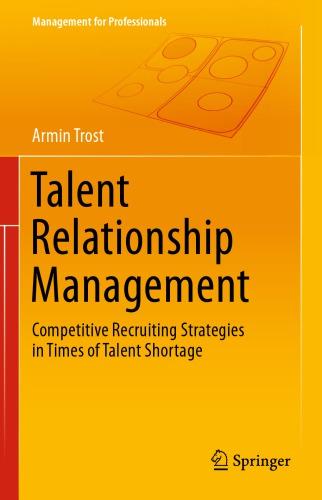
Relationship Management Competitive Recruiting Strategies in Times of Talent
Talent
Shortage Trost
More products digital (pdf, epub, mobi) instant download maybe you interests ...

Global
Talent Management David G. Collings
https://textbookfull.com/product/global-talent-management-davidg-collings/

The Talent Management Handbook: Making Culture a Competitive Advantage by Acquiring, Identifying, Developing, and Promoting the Best People Lance Berger
https://textbookfull.com/product/the-talent-management-handbookmaking-culture-a-competitive-advantage-by-acquiring-identifyingdeveloping-and-promoting-the-best-people-lance-berger/
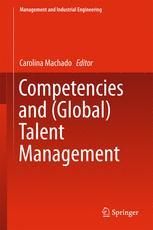
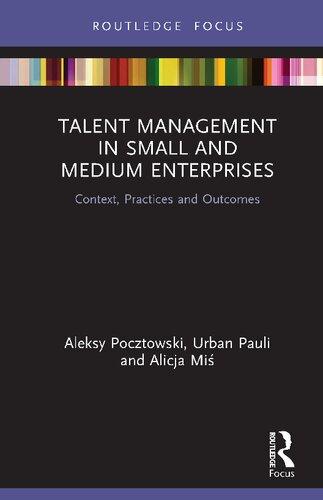
Competencies and Global Talent Management 1st Edition Carolina Machado (Eds.)
https://textbookfull.com/product/competencies-and-global-talentmanagement-1st-edition-carolina-machado-eds/ Talent Management in Small and Medium Enterprises Context Practices and Outcomes 1st Edition Aleksy Pocztowski
https://textbookfull.com/product/talent-management-in-small-andmedium-enterprises-context-practices-and-outcomes-1st-editionaleksy-pocztowski/

Talent Management in Emerging Market Firms: Global Strategy and Local Challenges 1st Edition Marina Latukha (Auth.)
https://textbookfull.com/product/talent-management-in-emergingmarket-firms-global-strategy-and-local-challenges-1st-editionmarina-latukha-auth/
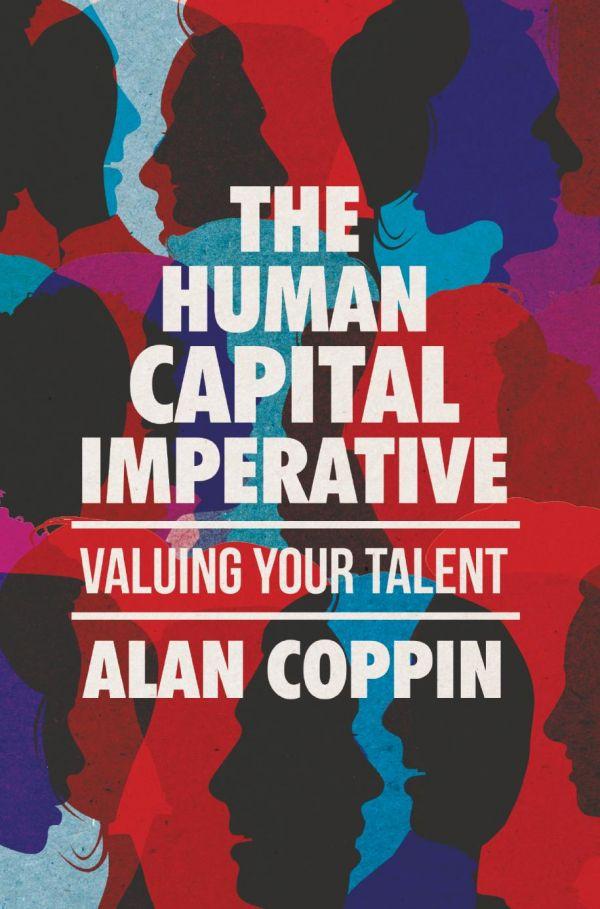
The human capital imperative valuing your talent Coppin
https://textbookfull.com/product/the-human-capital-imperativevaluing-your-talent-coppin/

Contract Options for Buyers and Sellers of Talent in Professional Sports Duane W Rockerbie
https://textbookfull.com/product/contract-options-for-buyers-andsellers-of-talent-in-professional-sports-duane-w-rockerbie/

Rethinking Talent Decisions A Tale of Complexity Technology and Subjectivity 1st Edition Wiblen
https://textbookfull.com/product/rethinking-talent-decisions-atale-of-complexity-technology-and-subjectivity-1st-editionwiblen/
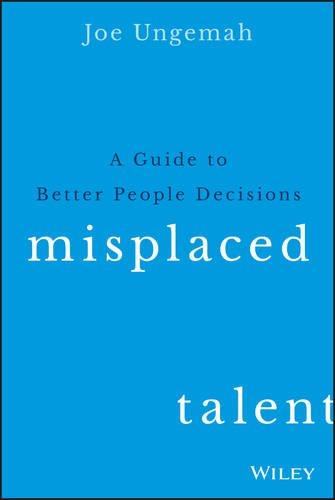
Misplaced Talent A Guide to Better People Decisions 1st Edition Joe Ungemah
https://textbookfull.com/product/misplaced-talent-a-guide-tobetter-people-decisions-1st-edition-joe-ungemah/


 Armin Trost
Armin Trost

Talent Relationship Management
Competitive Recruiting Strategies in Times of Talent Shortage


Management for Professionals
ManagementforProfessionals
Forfurthervolumes: http://www.springer.com/series/10101
ThiSisaFMBlankPage
ArminTrost TalentRelationship Management
TimesofTalentShortage
TranslatedbyEmilyPlank
CompetitiveRecruitingStrategiesin
ArminTrost
FurtwangenUniversity
Villingen-Schwenningen
Germany
ISSN2192-8096ISSN2192-810X(electronic) ISBN978-3-642-54556-6ISBN978-3-642-54557-3(eBook) DOI10.1007/978-3-642-54557-3
SpringerHeidelbergNewYorkDordrechtLondon
LibraryofCongressControlNumber:2014938632
# Springer-VerlagBerlinHeidelberg2014
Thisworkissubjecttocopyright.AllrightsarereservedbythePublisher,whetherthewholeorpart ofthematerialisconcerned,specificallytherightsoftranslation,reprinting,reuseofillustrations, recitation,broadcasting,reproductiononmicrofilmsorinanyotherphysicalway,andtransmissionor informationstorageandretrieval,electronicadaptation,computersoftware,orbysimilarordissimilar methodologynowknownorhereafterdeveloped.Exemptedfromthislegalreservationarebriefexcerpts inconnectionwithreviewsorscholarlyanalysisormaterialsuppliedspecificallyforthepurposeofbeing enteredandexecutedonacomputersystem,forexclusiveusebythepurchaserofthework.Duplication ofthispublicationorpartsthereofispermittedonlyundertheprovisionsoftheCopyrightLawofthe Publisher’slocation,initscurrentversion,andpermissionforusemustalwaysbeobtainedfrom Springer.PermissionsforusemaybeobtainedthroughRightsLinkattheCopyrightClearanceCenter. ViolationsareliabletoprosecutionundertherespectiveCopyrightLaw. Theuseofgeneraldescriptivenames,registerednames,trademarks,servicemarks,etc.inthis publicationdoesnotimply,evenintheabsenceofaspecificstatement,thatsuchnamesareexempt fromtherelevantprotectivelawsandregulationsandthereforefreeforgeneraluse. Whiletheadviceandinformationinthisbookarebelievedtobetrueandaccurateatthedateof publication,neithertheauthorsnortheeditorsnorthepublishercanacceptanylegalresponsibilityfor anyerrorsoromissionsthatmaybemade.Thepublishermakesnowarranty,expressorimplied,with respecttothematerialcontainedherein.
Printedonacid-freepaper
SpringerispartofSpringerScience+BusinessMedia(www.springer.com)
Foreword
Ihavebeeninvolvedwithrecruitmentforover10years.Itallstartedduringmy timeatSAParoundtheturnofthemillennium,andIstucktothesubjectupon becomingaprofessorin2005.IhavesincebeenfortunateenoughtomeetHR professionalsfrombothlargeandsmallbusinesses.Ihavespentnumeroushours anddaysdiscussingrecruitmentatseminars,aspartofprojects,orsimplythrough conversation.Indoingso,Ihavealwaysconsideredmyselfanagentofsorts.Iseea lot,learnalot,trytostructurethingscreatively,andthenpassthemon—toclients, colleagues,andstudents.It’smywayofimmersingmyselfinissuesandallowing otherstobenefitfromit.Overtheyears,Ihavecuriouslyabsorbedsuccessstories, observingwhatworksandwhatdoesn’t.IhavedrawnonscientificliteraturewhenI havedeemedthisusefulinpractice.Butmostofall,Ihavelearnedfromthepeople whocompetefortalentonadailybasis.Inthisbook,Iwanttogivebackmuchof whatIhavebeenabletolearnovertheyears,anddosoinastructuredmanner.
Thisbookisapersonalone,sincewhatIdescribeinitis,inaway,alsoa summaryofmyinsightsandideas.Asyouread,youwilldiscoveranauthorwhois enthusiastic,isprovocative,hasfunwiththesubject,isattimessurprisedand sometimesangry,andwriteshisideasstraightfromtheheart,whilealsoaddressing businessprocessesandmorecomplexissues.
Thebookdoes,ofcourse,containmanyGermanexamples,thoughthisshould notposeaproblemforreaders.It’sultimatelyaboutthematterathand,andnotthe countryinwhichtheexampleisset.BasedonwhatIknow,andhaveseeninmy internationalexperience,Icansaythattheideaspresentedinthisbookareuniversal,andcanbeappliedtoanycountry.
Anyonelookingforsolutionsinthestrugglefortalentwillfindlotsofanswers here.That’smypromisetoyou,thereader.Sincethecontentofthisbookcomes fromreal-lifescenarios,itisalsosuitableforreal-lifescenarios.Butit’sultimately uptoyoutoputitintopractice.Iwishyouallthebest,and,lastbutnotleast,hope thatyoufindthetalentyousourgentlyneedtosecureyourbusiness’future.
31January2014
Tu ¨ bingenArminTrost
v
ThiSisaFMBlankPage
Contents 1Introduction ...........................................1 2TheLabourMarketoftheFuture ..........................5 References.............................................10 3AnOverviewofTalentRelationshipManagement ..............11 3.1TalentFocus.. .....................................11 3.2TRMisStrategicandLong-Term........................12 3.3ActiveEmployersLookforPassiveCandidates..............12 3.4TargetGroupFocus..................................13 3.5TRMComponents ...................................13 References.............................................15 4DefiningRelevantTargetGroups ...........................17 4.1KeyandBottleneckFunctions ...........................17 4.2ChallengesandCompetencies......... ..................23 4.3AcceptableCompetenceGaps......... ..................25 4.4RelevantTargetGroupsontheLabourMarket...............29 4.5StrategicWorkforcePlanning...........................30 References.............................................34 5TheEmployeeValueProposition ...........................35 5.1TheTargetGroupinFocus .............................36 5.2DevisinganEmployeeValueProposition..................38 5.3FromtheEVPtotheTarget-Group-SpecificMessage..........42 5.4ConveyingtheEmployeeValueProposition... .............45 5.5SocialMedia.......................................46 5.6EmployerPR .......................................52 References.............................................55 6ActiveSourcingStrategies ................................57 6.1InitialThoughtsandOverview ..........................57 6.2SocialCommunityRecruiting ...........................59 6.3EmployeeReferralProgramme..........................62 6.4CampusRecruiting... ................................70 6.5TalentScouting.....................................79 6.6CompetitiveIntelligence..................... ..........82 vii
................83 6.8SummaryandFinalRecommendations.. ..................87 References.............................................89 7CandidateRetention .....................................91 7.1TheCandidateRetentionCycle..........................91 7.2DevelopingaTalentPool..............................93 7.3RetentionMeasures ..................................96 7.4Documentation ......................................101 7.5TalentCommunities. .................................104 References.............................................107
..........................109 8.1Speed,TransparencyandAppreciation ....................109 8.2TheRecruitingProcess................................113 8.3Consistency ........................................121 8.4MeasuringSuccessThroughCandidateSurveys..............122 References.............................................126 9FrameworkConditions ...................................127 9.1TheManagement’sObligation ..........................127 9.2OrganisationalConditions ..............................132 9.3InformationTechnology ...............................136
.........................138 9.5TheMonetaryBenefits ................................143 References.............................................149 10Conclusion ...........................................151 AbouttheAuthor ..........................................153 AbouttheTranslator .......................................155 viii Contents
6.7GuerillaRecruiting:UnorthodoxMeasures.
8ThePositiveCandidateExperience
9.4TRMinanInternationalContext
Introduction
Infuture,manybusinesseswillbefacedwithsomethingwhichcouldeasilybe dismissedasa“first-worldproblem”.Theywillbeanxiouslylookingforgood,new staff.Manylabourmarketsarebecomingverytight,particularlyinindustrialised Westerncountries,aswellaspartsofAsia.Wecannowdirectthisproblemto politicians,anddemandadifferentfamilypolicy,relaxationofimmigrationlaws, and,mostimportantly,investmentsineducationforallages.Thisisallwelland good,andIwouldendorseit.Butthisbookaddressestheissueofwhatbusinesses candoinrelationtorecruitment.Iwillthusbeadoptingamicroperspective.Iam oftenaskedwhetherthe“WarforTalent”hasarrived.Andtheansweris:yes,there isalreadyanacutetalentshortage,whichisduetoincrease.Butnowadaysweonly seea“warfortalent”inisolatedcases.Manybusinessesarestillveryponderous, passiveandunimaginativewhenitcomestotheirmethodsofrecruitment.Noone getshurt;thefocusisinsteadonthecandidates’interests.Therightoneswillcome alongatsomepoint.Evenlookingatthelatestliteratureonrecruitment,youwill seethatmostpublicationszeroinonstaffselectioninthiscontext.Yettheproblem nolongerliesinchoosingtherightcandidates—it’singettingthecandidatesinthe firstplace.
Injustafewyears,wewillbeseeingwinnersandlosersonthelabourmarket. Thewinnersaretodayalreadyhavingarethink,focusingoncompletelynew approachestorecruitment.Knownandtrustedmeasures,e.g.CampusRecruiting, aregivenafacelift,andareperformedinamoresystematic,sustainablemanner. Thewinnersconcentrateonemployerbranding,andappearopenandimaginative whenitcomestousingsocialmedia.Winnerswillhavelearnedtotreatcandidates ascustomers.Theyapproachthemactively,andseektobuildrelationshipswith them—overmanyyears.Ibelievethatmostbusinesseswhichtodaycomplainabout thetalentshortagehavegreatpotentialtoimproveintheareaoftalentacquisition. WeakHRmanagersmakeexcusesforthesmallnumberofincomingapplications, citinglowsalaries,location-baseddisadvantages,orthefactthattheirproductsare notsexyenough.StrongHRmanagersactivelylookfornewwaysofreachingoutto relevanttargetgroupsonthelabourmarket.Andthisbookhelpsthemdoit.Isee TalentRelationshipManagement(TRM)astheoptimumsolution.Employerswho
1
A.Trost, TalentRelationshipManagement,ManagementforProfessionals,
# Springer-VerlagBerlinHeidelberg2014 1
DOI10.1007/978-3-642-54557-3_1,
taketheTRMideasandapproachesseriously,andheedthem,willhaveamuch greaterchanceofultimatelycomingoutwinnersonthelabourmarket.Thatismy promisetoreaders.Whileitofcourseappliestolargecompanies,itisevenmore pertinenttothemanysmallandmedium-sizedbusinesses,whichdo,andwill, suffermoreintensivelyfromtheshortageoftalent.
Overtheyears,Ihaveseenalot,hadcountlessdiscussionswithemployers,held seminarsandpresentationsonthetopic,andhelpedbusinessessuccessfullycounter thisskillsshortageusingtheirownmeans.Asascientist,Iamalsoveryfamiliar withbestpracticesandthewayinwhichvariousrecruitmentapproacheswork.This bookisaconsolidated,structuredcompendiumofmyexperiencesandinsights fromthelast10years.Belowisanoverviewthechapters.
Followingthisintroduction(Chap. 1),Chap. 2 examinesthe labourmarketofthe future,discussingthekeyfactorsdeemedtohavebeenresponsiblefortheskills shortage.Demographicdevelopmentandthegrowingneedforstaffintheareasof mathematics,informationtechnology,scienceandengineeringareofcoursementionedhere.Itisalsobecomingclearthatfuturelabourmarketsaregovernedby differentrulescomparedtothepast.Forexample,theInternethasmadethemmore transparentthaneverbefore,resultingingreatercompetition.
Chapter 3 thenprovidesan overviewofTRM.Theindividualcomponents addressedinmoredetaillateronarepresentedinanoverallcontext.Onecommon threadrunningthroughthisbookistheparticularmindsetassociatedwithTRM. TRMisnotonlyacollectionofrelatedconcepts;itisaphilosophyofsorts,based oncertainpremises.Oneofthemainideasbehinditistothinkandactinamanner focusedontalentratherthanonvacancy.Wehavealreadyseenthisdistinctionin otherareas,wherecustomerfocusisgivenahigherprioritythanproductfocus.In future,peoplewillbetreatingtalentonthelabourmarketascustomers,ratherthan merelyconcentratingonfillingemptyseats.
Chapter 4 laysthefoundationsfortherestofthebook’scontent.Itisdedicatedto definingrelevanttargetgroupsonthelabourmarket andthustheissueofwhom youwanttoaddressonthelabourmarket.Thefirsttaskforbusinessesistodefine keyandbottleneckfunctions.Thisstepiscrucial,becauseitclarifieswhicharea (s)ofrecruitmentrequirethegreatestaction.TheaimofTRMisultimatelytofill theseprecisekeyandbottleneckfunctions,tyinginwiththequestionofwhich targetgroupsonthelabourmarketareconsideredrelevantwhenitcomestofilling thesecriticalpositions.Isitbusinesscomputinggraduates?Experiencedlogistics experts?Bythetimewegettoemployerbranding(Chap. 5)andactivesearch strategies(Chap. 6),itwillbeclearthatabusinessneedstoknowwhomitseeksto address,andwhere,onthelabourmarket.
ThefirststepinTRMistoformulatean employerpromise,whichisexaminedin detailinChap. 5.Thisessentiallyentailsbuildinganemployerbrand,butwitha clearfocusontargetgroups.Itisnolongerjusttheapplicantswhohavetoimpress duringaselectionprocess;employersalsohaveto“gainfullysell”theirkeyand bottleneckfunctions.Theanalysisandselectedcommunicationmeasuresmustbe approachedsystematicallytoensureeffortsheredonotendupbeingpurely random.Apartfromtheconventionalcommunicationactivities,peopleare
21Introduction
increasinglyalsotakingintoaccountsocialmedia,aswellasmoremoderntopics, likeemployerPR.
Chapter 6 looksat activesourcingstrategies,i.e.methodsforactivelyfinding potentiallysuitabletalentonthelabourmarket.Itdescribesawholerangeof options,disregardingtheconventional,morepassiveapproaches,suchasjob advertisementsorexecutivesearch.Activesourcingstrategiesaredesignedto reachouttopassivecandidates,i.e.thosewhoarenotactivelylookingforwork themselves.Searchingforcandidatesviasocialmedia,suchasLinkedInor employeereferralprogrammes,isoneofthefocusareashere,asiscampus recruiting.Approachessettobecomemorepopularinfuture,suchastalent scouting,guerillarecruitingandcompetitiveintelligence,arealsosuggested.
Followingtheemployer’spromiseandactivesourcingstrategies,Chap. 7 examinesthethirdcomponentofTRM,namely candidateretention.Businesses wantingtocontinuetosuccessfullyfillkeyandbottleneckfunctionsareboundto buildalonger-termrelationshipwithgoodpeopletheyhavemetsomewherealong theline,inthehopeofultimatelyemployingthem.Whilethisideaisessentially simple,itoftenfailsinpracticeduetothelackofnecessarystructure,sustainability, andprofessionalism.Thischapterthustakesastep-by-stepapproachtoexplainhow tobuildtalentpools,defineandimplementloyaltymeasures,andproperlydocumentinformationonthecandidateretentioncyclepresented.
Chapter 8 looksatthefourthTRMcomponent, candidateexperience. Ifan employerhasdonetheirhomeworkduringtheaforementionedmeasures,they eventuallyreachthepointwhereapromisingcandidateshowsinterestinaspecific job.Thisisthenusuallyfollowedbyaselectionprocess.Basedonmyown experienceandobservations,Iknowthatyoucandolotsofthingsrightandlots ofthingswronghere.Inessence,therecruitingprocessrequiresfast,transparent, responsiveaction,andtypicallygivesrisetoanumberofoftensimple,pragmatic ideas.
ThebookendswithChap. 9,whichaddressesthe frameworkconditions of successfulTRM,makingdetailedreferencetofiveaspects.Itfirstexplainsthat thesuccessofTRM—aswithmanyotherinternalcompanyinitiatives—issolely dependentonmanagementsupport,andshowshowthiscanbeachieved.But specialskillsandanappropriateTRMmentalityarealsonecessarywhenit comestoHR.Andthetechnologyaspectissimilarlyexamined.TRMisnota technicaltopic,buttechnologycanenableeffective,efficientimplementation.I thenstudytheissueofinternationality,andthedifferenttypesofTRMavailable whenkeyandbottleneckfunctionsneedtobefilledinaninternationalcontext.The chapterconcludeswiththerathercomplexissueofcalculatingreturnon investment.
1Introduction3
TheLabourMarketoftheFuture
Theso-called“WarforTalent”hasbeentalkedaboutsincethemid-1990s (Michaels,Handfield-Jones,&Axelrod, 2001).Inthemeantime,theworldhas seenseveraleconomiccrises,namelythecollapseoftheNewEconomyintheearly 2000s,andtheworldwidebankcrisisafewyearslater.AsIwritetheseverylines, EuropeandtheworldarestillbattlingtheeffectsoftheEuropeandebtcrisis.Each ofthesecrisescurbedthepreviouslyimmensedemandforspecialists,butwere followedbyanall-clear.Theupswingoccurringafterthesecrisesalsoseesan increaseindemandfortalented,motivatedstaff.Apartfromtheserathershort-term, cyclicalfluctuations,however,thereisthequestionoflong-termdevelopmenton thelabourmarket.WhatmustacountrylikeGermanybepreparedforoverthenext fewdecades?Shortandmid-termdevelopmentsplaylessofarolewhenanswering thisquestion,withthefocusshiftingtomoregeneraltrendsatamacrolevel.
Onemacrotrendwhicheveryonenowappearstohaveheardofis demographic development.Muchhasalreadybeenwrittenandpresentedonthistopic,andwe canclearlyseethechangingpopulationpyramids.Theproblemwiththeseage pyramidsisthattheyhardlyreflectactualdemographicdevelopment.Figure 2.1 showsanalternativeillustrationofageinginGermany.1 2010wassetasthestarting point.Allfuturevaluesshowtherelativechangeinvariousagegroupscomparedto 2010.Thisiswherethedramabecomesapparent,notonlyinrelationtothelabour market,butalsointermsofsocietyandsocialpolicy.Theforecastsarequite accurate.WecangetagoodestimateofhowmanypeopleinGermanywillreach theageof25in2035,becausewealreadyknowhowmanypeoplewerebornin 2010.
Theagegroupof25to34-yearoldsisparticularlyrelevant.Thereareanumber ofreasonswhyitwillbedifficulttosecurepriceleadershipinGermanyintermsof producinggoodsorprovidingservices,notleastbecauseofthehighwagecostsand socialsecuritytaxes.Infuture,Germany,orGermanindustry,willinsteadhaveto beabletodifferentiateitselfthroughproductandprocessinnovations.Innovationis
1 Source:U.S.CensusBureau,InternationalDataBase. http://www.census.gov/ipc/www/idb
A.Trost, TalentRelationshipManagement,ManagementforProfessionals, DOI10.1007/978-3-642-54557-3_2, # Springer-VerlagBerlinHeidelberg2014
2
5

criticaltothiscountry,andthisagegroupthereforeplaysamajorrolehere,because itisassumedthatpeoplewillreachthepeakoftheircreativeandscientificabilityat thisage.Thisagegroupof25to34-year-oldsremainsconstantuntil2020,after whichitdecreasesinsizebyaround1%ayear.Thisisextremelydramatic.
EquallydramaticistheageingoftheGermanpopulation.In2035,wewillhave 40%morepeopleover65thanwedotoday.Thesimple,accurate“2020/5050”rule ofthumbstatesthat50%ofpeoplewillbeover50in2020.Thisdegreeofageing meansasignificantnumberofstaffatmanycompanieswillretireoverthenextfew years,whichinturnresultsinagreaterneedforpersonnel.Eventoday,moreand morebusinessesareconductingagestructureanalysesanddevelopingscenariosto seehowmanystaffwillneedtobereplacedintheyearstocome.Someofthe figuresarealarminglyominous.
Anotherrelevantmegatrendistheincreasing transparency ofgloballabour markets.Previously,peoplewouldparticularlylookforworkonSaturdays.They wouldbuynewspapers,armthemselveswithahighlighter,andporeoverevery pageofthejobmarket.Oneadvertisementwouldbecompetingagainsttheothers appearinginthesameissueontherespectivedays.Today,ajobadvertisementon theInternetcompetesagainstthousandsofothers.Findingadvertisedjobshasnever beeneasier.Withinjustafewseconds,youcanhaveaccesstoalladvertisements relatingtoaspecifickeyword,worldwide.Oneofthemostadvancedsitesis SimplyHired.2 Broadlyspeaking,itisaplatformwhichlooksandworkssimilarly toGoogle,butonlyadvertisesjobs.Itsjobdatabaseisprobablythelargestinthe world.Figure 2.2 showsascreenshotofthissite.
Therelativechangesinagegroupsin2010inGermany 2 http://www.simplyhired.com
-30% -20% -10% 0% 10% 20% 30% 40% 50% 201020152020202520302035 25-34 35-49 50-64 65+
62TheLabourMarketoftheFuture
Fig.2.1

Thesocialrelationshipsamongsttalent,andbetweenemployersandtalent,are alsobecomingmoretransparentasaresultofthedevelopmentsinsocialmedia. Apartfromthesearchresults,SimplyHiredadditionallyenablesintegrationwith Facebook,3 meaningseekerscanfindjobsallovertheworldthroughtheirown socialnetwork.Thisisjustoneexampleofhowjobsandsocialnetworksare becomingincreasinglyentwinedontheInternet.
Buttheriseinglobaltransparencynotonlyappliestojobsandprospective workers;italsoappliestoemployers.Rarelyhasiteverbeensoeasyforemployees, jobseekersandapplicantstogaininsightsintohowvariousemployersoperate. Peoplewhobarelyknoweachotherexchangeinformationonemployersvia Facebook,orsubmitratingsonemployerreviewplatforms.Jobvoting4 isprobably themostimportantplatformforemployerreviews.WhatTripadvisorisforhotels, Jobvotingisforemployers.Butwhereverthereistransparency,thereisalso competition,whichmeansboththreatsandopportunitiesforeveryemployer.The possibilitieswillbeaddressedinmoredetaillateroninthisbook.
Sinceindustrialisationinthemidtolatenineteenthcentury,theworkingworld hasbeenundergoingacontinuous shiftfrommanuallabourtomentalwork. This developmentisslowbutconstant,andisrarelydiscussed.Yetitisprobablythe greatestinfluenceroverthewayinwhichHRmanagementhasbeen,andmustbe,
3 http://www.facebook.com
4 http://www.jobvoting.com
Fig.2.2 ScreenshotofSimplyHired
2TheLabourMarketoftheFuture7
understood.HenryFordisoncesaidtohavecomplainedthat,wheneverhe employedtwohands,hewouldget“abrainattached”.Mostemployeesoccupied themselveswithperformingstupid,mostlymanualtasks.Nowadays,therearestill manyfieldsinwhichstupidtasksareperformed.Thelastfewyearshaveevenseen newfieldscreated,suchassupermarketcashiersandcall-centreworkers.Wenow liveinaknowledgesociety.Mostemployeesgenerateaddedvaluebycreatively usingtheirownorexternalknowledgetoaddressincreasinglycomplexproblems. Conservativeoccupationalvirtueslikediligenceandobediencearelosingtheir importancetotheabilityandwillingnesstogenerateideasandsuccessfullyimplementthemwithothers.
Thisiswhymanycountriesarecomplainingaboutatalentshortage,despite continuouslyhighunemployment.Forexample,engineerunemploymentin Germanyhasdroppedtojustafewthousandoverthelastfewyears.Welltrained peoplewhoareconstantlypreparedtopursuenewdevelopmentsarebeingsought. Ontheotherhand,peoplewithlittleornoeducationwillhaveveryfewjob prospectsinfuture.Byallaccounts,thisdevelopmentissettocontinue,andthe demandforqualifiedstaff(comparedtounderqualifiedworkers)willsteadilyrise. Itisthusacaseof‘increasingneedforspecialists’meets‘decreasingavailabilityof qualifiedprofessionals’.
Overthelastfewdecades,wehavebeenseeingamore globallabourmarket, partlyasaresultoftheaforementionedglobaltransparencyprovidedbythe Internet,butalsoduetothefactthatmoreandmoretalentedpeoplearemoving betweendifferentcountries;aphenomenonalsoknownas“BrainDrain”.
Theaforementionedmacrotrendsresponsibleforafutureskillsshortageor heightenedcompetitionfortalentincludethedropinuniversitygraduatesinthe subjectsofMathematics,InformationTechnology,ScienceandEngineering,which hasbeenobservedinmanycountries.AstudybytheOECD(2008)showsthat,for everyoneengineeragedover55inGermany,thereare0.9agedunder35.Germany thushasoneofthelowestrankingscomparedtoothercountriesinEuropeand aroundtheworld,e.g.Swedenwithafactorof4.7,Spainwithafactorof3.5,France at2.4andGreatBritainat1.9.
The changingcommunicationpatterns offuturegenerationsisanother megatrend.Ireceivedailyemailsfromstudents,mostofwhicharesuccinct requestsforliteraturetipsorexpertinterviews.Iwouldneverhavedaredto approachuniversitylecturerssodirectlyasastudentintheearly1990s.Thisisa typicalsymptomofnewcommunicativebehaviour.Oneofthereasonsforthisis thefactthattheInternetgivesitsusersaworldfreeofhierarchy.Thosewhoarepart ofitcanbeaddresseddirectly.It’swhatsocialmedialivesoff.Thisissueis discussedinacademiccirclesusinggenerationdifferences.Thefocushereison theso-calledGenerationY,i.e.allthosebornbetween1980and2000,forwhomthe aforementionedbehaviourisatypicalattribute(cf.Tapscott, 2009).Onthelabour market,peoplewillhavetogetusedtofutureemployeesapproachingcompanies withthissamedirectness:“Hi,mynameisJohn,andIjustwantedtoseewhetherit wasworthmywhiletosubmitajobapplicationtoyou.”Employersmustparticularlyrecognisethatcommunicationwillincreasinglytakeplaceviasocialmedia
82TheLabourMarketoftheFuture
platforms,andnotonlybetweenemployeesandemployers,butbetweenallparties (seealsoBox2.1).
Box2.1:AWeekofNoInternetorMobilePhone
Duringthe2010summersemester,eightstudentsatmyfacultyat FurtwangenUniversitysignedadeclaration,statingtheywouldrefrainfrom usingtheInternetandtheirmobilephonefor1week.Theywereaskedto writedowntheirexperiencesinasmalldiary.Theaimwastouseaselfexperimenttodeterminetheimportanceofmodernmeansofcommunication ineverydaystudentlife.
Theresultswereastonishing—somewouldsayappalling.Modernlifeis virtuallyimpossiblewithouttheInternetandmobilephones.Itisextremely difficulttostudywithouttheInternet,becauseyoudon’thaveaccessto relevantliterature,youdon’tgetnotifiedabouttimetablechanges,andyou lackanimportantplatformfortechnicalexchangeamongststudents.Itisvery hardtoorganiseyourprivatelife,becausepeoplenowadaysmakeplansin realtime,ratherthanafterlectures,aswasdoneinthepast.Youhaveno accesstoinformationonculturalevents(cinema,concerts),youmissouton last-minuteparties,andifyouwanttotraveltocitynearby,you’llfind yourselfmissingmorethanjusttheonlinetimetable.Ifyou’retogetherasa groupinacityanddon’thaveamobilephone,youhavetogetusedtoholding hands.Ifyoulosetheothers,youhavetomakeyourownwayhome.Thelack ofcontactwithotherstriggersemotionalreactionsreminiscentofwithdrawal symptoms.StudentsfeelisolatedwithoutFacebookandSMS,indicatingthat psychologicalsecurityaspectsareatplay.Ifyoudon’tcheckbackinto Facebookafteraparty,youwon’tknowwhethertheothershavereached homesafely.Parentsalsoworryabouttheirchildren’slackofcontactability. Thosewhousethetried-and-tested“snailmail”mustexpectslowcommunication.Birthdaycardsmustbesent2daysinadvance,ifyouevenremember people’sbirthdaysinthefirstplace.Becausetheseareusuallysavedonyour mobileornotifiedtoyouviaFacebook.
Insum,itcanbesaidthattheskillsshortageinmanycountrieswilldrastically increaseasaresultofthefollowingmacrotrends:
–Demographicdevelopmentsmeanthenumberofretiringemployeeswillrise drasticallyoverthenextfewyears,whilethenumberofyoungerpeopleis dropping.
–TheInternetismakinglabourmarketsincreasinglytransparent,whichfurther intensifiesthecompetitionfortalent.Jobs,employees,candidates,employers, andthesocialrelationshipsbetweenthesepeoplearenowvisibletoeveryone, duetospecialplatformsandsocialmedia.
2TheLabourMarketoftheFuture9
–Theshiftfrommanuallabourtomentalwork,whichhasbeengoingonfor decadesinthecontextofagrowingknowledgeeconomy,stimulatestheever increasingdemandforhighlyqualifiedstaff.
–Thecompetitionfortalentisbecomingincreasinglyglobal.Thereare complaintsofarising“braindrain”ofhighlyqualifiedworkers.
–Therearenotenoughgraduatesintechnicalandscientificfields.Thelong-term demandforspecialistswillnotbepermanentlymetthroughpubliceducation.
–Futuregenerationswillcommunicatewithandaboutemployersinamoreopen, directfashion,orwillatleastexpecttodoso.Theemployerswhocanreachout totheiryoungertargetgroupsmoredirectlywillbetheultimatewinners.
Inlightofthis,employers,aswellasentirenations,willbegrapplingtofind solutions.Companieswillincreasinglyhavetofaceuptothechallengeofproviding answerstotheselong-term,reliablyforeseeabledevelopments.Soitisnowonder that,inrecentyears,moreandmorebusinesseshavebeenthinkingaboutcreating anemployerbrand,whichmakesalotofsenseinmostcases.However,themost effectiveanswertofillingkeyfunctionsisTR—anew,trend-settingapproachto gaininghighlyqualifiedworkers,particularlyforcritical,hard-to-fillroles.
References
Michaels,E.,Handfield-Jones,H.,&Axelrod,B.(2001). Thewarfortalent.Boston:Harvard BusinessSchoolPress.
Tapscott,D.(2009). Grownupdigital:Howthenetgenerationischangingtheworld.NewYork: McGrawHill. 102TheLabourMarketoftheFuture
AnOverviewofTalentRelationship Management
Theconventionalapproachtorecruitingstaffistoadvertisevacantpositionsand thenhopeforapplications—“PostandPray”.Anexecutivesearchconsultantis hiredincasesprovingdifficulttoobtainapplications.Companiesattendcareerfairs orplaceimageadsincertainmediaandatselecteduniversitiestoincreasethe inflowofapplications.Thistraditionalmethodismorethanadequateformanyjobs. Forothers,however,itisstretchedtoitslimits,dueinnosmallparttothetalent shortagementionedinthepreviouschapter.
Thischapterwillthuspresentanoverviewofanapproachwhichenables employerstoeffectivelyandsuccessfullyfillhard-to-fillpositionsusingtheirown resources.ItwillsubsequentlybereferredtoasTRM(TalentRelationshipManagement),basedontheconceptofCustomerRelationshipManagement(CRM, Jackson, 2005),whichisalreadywellknowninsales.Thebasicprincipleswillfirst bediscussed,followedbyageneraldescriptionofhowTRMworks.Therespective activitieswillbeexaminedinmoredetaillaterinthebook.
3.1TalentFocus
Thetraditionalapproachtorecruitmentistofocusonvacancies.Avacant, approvedpositioninneedoffillingsparksactionintheareasofHRmarketing andrecruiting.Arecruitingprocessisonlystartedwhenavacancyarises. Employersusuallyplaceajobadvertisementbasedontherespectivepositionand associatedchallenges,andthenawaitandpreselectapplications.Promising candidatesundergoamoreintensiveselectionprocess,withthebestoneultimately offeredthejob.Theproblem—thevacancy—issolved;theprojectiscomplete, andcanbefiledaway.Unsuccessfulapplicantsaresentarejectionletter.Thetop halfofFig. 3.1 illustratesthisvacancy-focusedapproach,contrastedwithatalentfocusedoneatthebottom.
TalentfocusisaprincipleofTRM,andmeansmakingthetalentthefocalpoint ofyourthoughtsandactions.It’snotacaseofseekingtalentforavacancy,but ratherviceversa:avacancyissoughtforanidentifiedtalent.Talented,motivated
A.Trost, TalentRelationshipManagement,ManagementforProfessionals, DOI10.1007/978-3-642-54557-3_3, # Springer-VerlagBerlinHeidelberg2014
3
11
Talent-focused approach
Fig.3.1 Vacancy-focusedversustalent-focusedrecruitingprocesses
candidatesarealwayssought,regardlessofacutevacancies,atleastintermsof hard-to-fillpositionswhichpermanentlyorfrequentlyrequireacertainamountof staff.Atalent-focusedmindsetinvolvesthinkingofeachconversationasajob interview,justlikeeverysalesperson’sconversationisviewedasapitch.In extremecases,it’snotjusttheHRdepartmentwhichisconstantlyonthelookout forpromisingtalent,butallstaffandmanagers.Ifthetalentisgivenapositive initialassessment,attemptsaremadetoestablishalong-termrelationshipwith thesecandidates,withaviewtoemploymentatsomepoint.Indoingso,the employerbearsinmindthecandidates’individualcareerpreferencesandactively caterstothese.
3.2TRMisStrategicandLong-Term
Aswillbedemonstrated,TRMactivitiesparticularlyrelatetokeyfunctions, i.e.functionsofextreme,strategicimportancetoacompany.ThismeansTRM hasadirectinfluenceoveracompany’sfuture.Thesepositionsnotonlyrequire suitablestaff,butstaffwhoarealsosignificantlybetterthanthoseincomparable positionsatrivalcompanies.ThisiswhyTRMtalksabout“talent”,i.e.candidates whodemonstratethepotentialtoputinabove-averageperformancesinthelongterm.Gainingtalentedstaffismuchmoredifficultthanemploying“normal” workers.Theyusuallyadoptapassiveapproachtotheirsearchfornewcareer prospects,andhavenumerous,attractiveoptions.
3.3ActiveEmployersLookforPassiveCandidates
TRMisanextremelyactiveapproachfromanemployer’sperspective.Fora numberofmonths,ithasbeenclearthatpeopleareunderstandingthechangein powerrelationshipsonthelabourmarket.IhearmoreandmoreHRprofessionals sayingthat,infuture,itwillnolongerbeaboutthecandidateapplyingtothe company,butviceversa.ThisnewattitudeisafundamentalpartofTRM.
Vacancy Job ad Application Selection Offer Search Initial assessment Long-term relationship Vacancy Offer Vacancy-focused approach
123AnOverviewofTalentRelationshipManagement
Businessesactivelylookforpromisingcandidates,endeavourtopresentselected jobsinthebestpossiblelight,andthentrytosellthem.It’snotjusttheapplicant whohastoimpress;theemployeralsohastoappearattractivetopotentially interestedparties.Avastpercentageofacompany’sworkforce,particularlythe management,considertherecruitmentoftalentedspecialiststobeoneoftheirmost importanttasks.Thisformofactivityispermanentandongoing.Nurturing relationshipsoftenrequirespatience.
TRMisbasedontheassumptionthat,thebetterqualifiedanemployee,themore passivetheyareaboutsearchingfornewcareerprospects.Topcandidatesnolonger applyoftheirownaccord,butinsteadwaittobeapproached.Itisthusassumedthat employersneedtobeactiveinordertosecurehighlyqualifiedemployees.
3.4TargetGroupFocus
Aswillbecomeclearerthroughoutthisbook,TRMtiesupaconsiderableamountof resources.Searchingactivelyforcandidatesandnurturinglong-term,personal relationshipsistime-consuming,andoftenunnecessaryformanyareasofacompany.Mostpositionswillalwaysbeeasytofill,purelyduetotheunemployment existingintherespectivecountry.Findingasuitablecashierforasupermarketis easy,anddoesnotrequireanyspecialeffort.Fillingselectpositionsrequiresmore work.IwillexplainthepositionsforwhichTRMisadvisable.Inthisrespect,TRM isalwaysfocusedonthetargetgroup,notonthemasses,andthisiswhat distinguishesitfromemployerbrandingorconventionalHRmarketing,which hasabroaderreach.
Figure 3.2 comparesTRMwithemployerbrandingandrecruiting.Employer brandingusuallypositionsandpresentsacompanyasanattractiveemployertothe entirelabourmarket(Trost, 2013),whilerecruitinginvolvesdealingintensively withindividualcandidatestofillspecificjobs.Intermsofreachandproximityto thecandidate,TRMthussitsbetweenthesetwospheresofactivity.
TRMmeansintensivelyfocusingonthepre-definedtargetgroup.Thosewanting torecruitdoctorsmustunderstandwheretofindthisrarespecies,whichworking conditionsthepeopleinthistargetgroupprefer,andwhattheirmedia preferencesare.
3.5TRMComponents
BelowisanoverviewoftheTRMcomponents,withFig. 3.3 showingagraphic summary.Thevariouscomponentswillbeaddressedingreaterdetaillateroninthis book.
TRMstartswith definingthetargetgroup.Asalreadymentioned,TRM concentratesonhard-to-fillpositionsrequiringasignificantnumberofstafffor thelong-term.Theseareknownasbottleneckfunctions.Ontheotherhand,TRM particularlycomesintoeffectwhentheidentifiedpositionsarestrategically
3.5TRMComponents13
Fig.3.2 TRMbetween
Employer Branding
Talent Relationship Management
Recruiting
Proximity to candidates
relevantroles,i.e.rolesthecompanyshouldfillwithbetterstaffthanthose occupyingsimilarpositionsatrivalcompanies.Thesearealsoknownaskey functions.Thisnowraisesthequestionastowhotherespectivetargetgroupson thelabourmarketare.Theresearch&developmentdepartmentofapharmaceutical companywillbelookingfordoctors,chemists,biologistsorpharmacists,whilethe purchasingdepartmentofaretailtraderismoreinterestedinbusinessadministrationgraduateswithrelevantprofessionalexperience.Purchasingisconsidereda keyfunctionifaretailtraderisdistinguishedbypriceorquality.
Ifthetargetgrouponthelabourmarkethasbeendefined,itisthenaquestionof howtheycanbeconvincedoftheadvantagesofthekeyorbottleneckfunctions.A clear,authentic,persuasiveargumentisultimatelyrequired.Theseargumentsare collectivelyknownasthe employerpromise,formingthebasisfortheapproach,as wellasforallHRmarketingcampaignsaimedatthetargetgroup.Inprinciple,the methodisidenticaltothatofdevelopinganemployerbrand,withthesoledifferencebeingthattheactivitiesperformedhereareaimedatcertaintargetgroups,and onlyselectedfunctionscanbepositionedandpresented.
Activesourcingstrategies specificallyinvolvefindingsuitable,talentedand motivatedpeople,andcontactingthempersonally.Asmentionedabove,theaim istoidentifypassivecandidates.Anumberofoftenwell-knownapproachesare adoptedhere,suchascampusrecruiting,employeereferralprogrammesorsearches forcandidatesonsocialmediaplatforms(e.g.LinkedIn).Inrecentyears,many forward-thinkingcompanieshavealsodaredtoexplorecompletelynew,creative, andsometimesaggressivepaths.
TheessenceofTRMistobuildatalentpool,andmanagepersonalrelationships withselectedtalentinastructured,systematicmannerthrough candidateretention. Theideabehindthisisprettysimple:employerstrytostayincontactwith Reach
employerbrandingand recruiting 143AnOverviewofTalentRelationshipManagement
AnoverviewoftheTRMprocess
promisingtalentinordertosecurethemforthecompanysoonerorlater.Asshown inFig. 3.3,thisisacyclicalprocessinwhichanemployercontinuouslythinksabout howtofurthertherelationshipandanynecessarymeasures,andactsaccordingly. Allpreviouseffortsultimatelyaimtogaintalentedcandidatesasemployees.The focusisthusongettingacandidatetoeventuallyexpressconcreteinterestina usuallyactivelyofferedjob,promptingasortofselectionprocess,whoseintensity naturallydependsonpriorknowledgeaboutthecandidate.Itisparticularlycrucial inthisphasetoconveya positivecandidateexperience.Thisalsoespeciallyapplies tocandidateswhohaveapplieddirectlyforaposition,andwhowerenotpartofa candidateretentionprogramme.Theanalogywithconsumerexperienceinamarketingcontextisnotjustacoincidence(cf.Baron,Conway&Warnaby, 2010).This bookwillconcentrateonthreeTRM-relatedcriteriafordealingwithcandidates, namelyspeed,transparencyandpersonalappreciation.Thesearecertainlyhelpful forfillinganypositionatacompany,butaresimplyessentialwhenitcomesto fillingcriticalpositions.
References
Baron,S.,Conway,T.,&Warnaby,G.C.(2010). Relationshipmarketing:Aconsumerexperience approach.London:Sage. Jackson,T.W.(2005).CRMfromarttoscience. DatabaseMarketing&CustomerStrategy Management,13(1),76–92. Trost,A.(2013).Employerbranding.In Employerbranding.Arbeitgeberpositionierenund prasentieren (A.Trostthed.,pp.13–77).Cologne:Luchterhand.
Active sourcing
Candidate
Candidate
Employee Value
Target
strategies
retention
experience Selection
Proposition
group definition
References 15
Fig.3.3
DefiningRelevantTargetGroups
TRMalwaysstartswithdefiningthetargetgroup,i.e.clarifyingwhichgroupsof peopleonthelabourmarketyouwanttosecureforspecificpositions.Targetgroups maybecertainoccupationalcategories,staffinspecificrolesatothercompanies,or evengraduatesfromparticularcourses.Initsbroadestsense,thisstepisanelement ofstrategicworkforceplanning,inwhichso-calledkeyandbottleneckfunctionsare ofcriticalimportance.AnHR-baseddistinctionismadebetweenvariouscompany positionshere(cf.alsoBecker,Huselid,&Beatty, 2009;Huselid,Beatty,& Becker, 2005).
Theidentificationofkeyfunctionsisgearedtowardsthecompanystrategy,with themainfocusbeingonwhichcompanypositionsareparticularlyrelevantwhenit comestosecuringacompetitiveadvantage.Bottleneckfunctionsaredetermined basedonfuturepersonnelrequirements,takingintoaccountthedifficulty associatedwithhiringthese.Itisthennecessarytodefinewhichfuturechallenges mustbeovercomebythestaffmembersinbothkeyandbottleneckfunctions,and whichskillsareconsideredessentialforthis.Onlyoncethishasbeenclarifiedcan weanswerthequestionastowhichtargetgroupsonthelabourmarketare potentiallyabletosuccessfullyfillkeyandbottleneckfunctions.Figure 4.1 summarisesthesesteps.
Thefollowingsectionswillthoroughlyexaminethispathfromcompanystrategy andpersonnelrequirementstodefinitionoftargetgroupsonthelabourmarket.The diagramstartsbyidentifyingkeyandbottleneckfunctions.
4.1KeyandBottleneckFunctions
Imagineacompanywantstoemploy100newstaffoverthenext12months.This employerisgivenabudgetof1millionEurosforpersonnelmarketingand recruiting.Howshouldthecompanyspreadthebudgetinordertosecurethese 100staffmembers?Thereareseveralpossibleoptions.Theobviousapproach wouldbetoevenlyspreadthebudgetoverthe100newappointments,though hardlyanycompanywoulddothis.Alternatively,youcoulddivideupthebudgetso
A.Trost, TalentRelationshipManagement,ManagementforProfessionals, DOI10.1007/978-3-642-54557-3_4, # Springer-VerlagBerlinHeidelberg2014
4
17
Fig.4.1 Fromcompany strategytotargetgrouponthe
Company strategy personnel requirements , Key & bottleneck functions
Challenges & competencies
Target groups on the labour market
thatalargerportionisusedforthehard-to-fillpositions.Broadlyspeaking,these arebottleneckfunctions.Youcouldalsodedicateagreaterpercentageofthebudget tothosepositionsofstrategicimportancetothecompanywhicharealsousually moredifficulttofill.Theseareknownaskeyfunctions.Eventhoughmost businessesadoptthisapproach,mostofthemfailtoprioritisesystematically.
Sowhatareacompany’s keyfunctions?Hereareafewexamplestostartusoff. Inmylectures,Ioccasionallyraisethequestionofwhichjobisthemostimportant atUnitedAirlines.Theanswersvary,butthemostcommononeisthepilot.Pilots getaplanefromAtoB.Theyhaveresponsibilityonboard,andwearauthoritative uniforms.However,whatdifferencewoulditmakeifUnitedAirlinesemployednot justaveragepilots,butthebestintheworld?Itwouldn’tmakeanydifference. Passengerswouldn’tnoticethedifference,andwouldn’tchangetheirconsumer behaviouraccordingtothequalityofthepilots.Itisexpectedthatpilots’ qualificationswillcomplywithreliableinternationalstandards.Obviouslyapilot’s qualificationwouldmakeadifferenceincriticalsituations.Weonlyhavetothink ofUSAirwaysflight1549,whenpilotChesleySullenbergerlandedtheAirbus A320,carrying155passengers,safelyontheHudsonRiverinNewYorkfollowing suddenenginedamageon15January2009.Butpassengersdon’tusuallyexpect thosesortsofincidents,otherwisetheywouldn’tgetontheplane.Atbest,apilot wouldbeconsideredakeyfunctionifanairlinewerepositionedasthesafestinthe world,andthusappealedtocustomerswhowereparticularlyafraidofflying.
AnyonefamiliarwiththeretaileranddiscountstoreWalmartknowsthatitoften hasattention-grabbingpromotions,offeringexpensiveproductslikeBlack& Deckerlawnmowers,flat-screenTVs,laptopsandevendrumkitsatsensational prices.Thefactthatthesesortsofproductscanbesoldatthesepricesisoftentothe creditofcertainpurchasersorpurchaserteams.Whatdifferencewoulditmaketo Walmartifitemployedthebest,ratherthanaveragepurchasers?Itcouldmakea drasticdifference,becauseitistheseverypromotionswhichgreatlyappealto
labourmarket 184DefiningRelevantTargetGroups
currentandpotentialcustomers,boostingsalesandsupportingthediscountstore’s low-pricestrategyinthelong-term.
NathanMyhrvold,aformerstudentofStephenHawkingandbrilliantmathematician,wastheChiefTechnologyOfficeratMicrosoftuntil1999.Heoncecoined thephrase:“Thetopsoftwaredevelopersaremoreproductivethanaveragesoftwaredevelopersnotbyafactorof10or100,oreven1,000,but10,000.”Atfirst glance,thissoundsheavilyexaggerated.Butanyonewhohasworkedinthe softwareindustrywillknowthatthebestdevelopersdothingsmuchbetteranda lotdifferentlytoaveragedevelopers.Theyaresignificantlyfaster,moreefficient, andmakefewererrors.Theybearinmindfuturedevelopmentswhencreating currentsoftware,andanticipatecustomerrequirementsbeforethecustomershave evenarticulatedthesethemselves.Softwarecompaniesoftengeneratemillionsof dollarsinsalesusingtheresultsofjustafewstaff,whiletheworkofother employeessimplyfizzlesout.
SowhatisthedifferencebetweentheUnitedAirlinespilotsandtheWalmart purchasersorMicrosoftdevelopers?Thelatterarestaffwithkeyfunctions, i.e.functionswhichhaveadirectimpactonacompany’ssuccessandcompetitiveness.ThegraphinFig. 4.2 showsthedifferencebetweenkeyfunctionsandother roles.
Inmostrolesatcompanies,anemployee’sperformanceisproportionatetothe addedvaluegenerated.Ifastaffmemberworks10%fasterormoreproductively thananother,thedifferenceinaddedvaluebetweenthesetwopeoplewillalsobe 10%.Onescrews500partstogethereveryday,andtheother550.Theaddedvalue generatedforthecompanydiffersaccordingly.Thisisparticularlythecasein productiondivisionsorotherareasinvolvingstandardisedprocesses.Whenit comestokeyfunctions,however,anabove-averageperformancecandrastically increaseacompany’svalue.ApharmaceuticalcompanylikeBayercanearn billionsofdollarsinsalesbydevelopinganewproductinitsresearchand developmentdepartmentandlaunchingitquicklyonthemarket.Thiscompany hasaninnovationstrategywhichclearlyallowstheresearchanddevelopment departmenttoperformthekeyfunctions.Atothercompaniesinthesameindustry, whichinsteadpursueapricestrategyandseektokeepthepricesofgeneric medicationaslowaspossible,competitivenessisdeterminedbycompletelydifferentfunctions.Atcompaniesintheclothingandfashionindustry,suchasHugo Boss,designersarecriticallyresponsibleforthesalesultimatelygeneratedbya collection.Ifadesignermatchesthecustomers’tastes,thishasfar-reaching consequencesforthecompanyasawhole.
Thefunctionswhichcanbeconsideredkeyataparticularcompanydirectly dependonitsstrategyandpositiononthemarket,andthereforeonthequestionof whycustomersbuyitsproductsorservices.Manymonthsago,Iwaspartofan interestingdiscussiononthistopicwithmanagersfromretailcompanies.Wetalked aboutwhichpositionswerekeyfunctions.Thepurchasesandsalesdepartments wererivals.Thedecidingfactorintheendwastherealisationthatpeoplewant customerstoenteradepartmentstorebecauseofthepriceandqualityofthe products,notthefriendlyorexpertsalesadvice.Theshoppingexperiencetook
4.1KeyandBottleneckFunctions19
Fig.4.2 Therelationship betweenperformanceand addedvalueforkeyfunctions andotherroles
moreofabackseat.Theproblemwasthusresolved.Ifthepriceorqualityplaysa roleinretailtrade,itcanbeassumedthatpurchasingisakeyfunction,asis frequentlyalsologistics.Figure 4.3 clearlyshowswhichrolesatacompanycan usuallybeconsideredkeyfunctions,dependingonthecompany’sstrategicfocus. Manycompanieswilladmitherethattheydon’thaveaclearcorporatestrategy. Thisisunderstandable,becausemanycasesofbusinessmanagementdon’tfollow classictextbookrules.MostmanagingdirectorsandexecutiveboardshavepresumablynotreadMichaelPorter,nordotheyincorporatehisideaswhenmakingtheir decisions.Thisdoesn’tnecessarilymeanthatthesecompaniesarepoorlymanaged. Manyinsteadactinaccordancewiththemottoof“wedowhatwedoandtrytobe betterthantherest.”“Weproducesafetysystems,listentoourcustomers,anddo ourbest—that’sourstrategy.”Thisistypicalofwhatyouwouldhearfrom decision-makersatlargeandmedium-sizedbusinesses.Yetmostcompanieshave along-termfocus.Managingdirectorsandexecutiveboardchairpersonsusually haveawell-thought-outanswertothequestionofwhytheircompanywillstillexist in10years.
Discussionsontheissueofwhichfunctionsatacompanyaretobedeemedkey functionsarepoliticallycomplex,andmustbeconductedanddecidedonatthe highestlevel.Themainreasonwhythesediscussionsaresocomplexisbecause theyaddresstherelativeimportancebetweenvariousfunctionsatthecompany,and therespectivemanagersarenotwillingtodowngradetheirareainfavourof another.Acharacteristicerrorveryoftenalsoemergeswhenidentifyingkey functions.Forinstance,peoplefrequentlyarguethataparticularroleisakey functionbecauseitisindispensable.Whatwouldthecompanybewithouta functioningITdepartment?Evencompaniesfocusingoninnovationadmitthat alltheinnovationsintheworldwouldbeuselessiftherewerenosalesdepartment.
Performance
Key function Other function
Added value for the company
204DefiningRelevantTargetGroups
Strategic focusKey function
Innovation, technological leadershipResearch & Development GrowthSales
Brand leadershipMarketing, Design
Price leadershipPurchasing, Production Planning
Thisargumentisnotconstructiveinthiscontext,forcompaniesshouldassumethat allfunctionsarenecessaryandindispensableinsomeway.Thesesortsof discussionsarelikedebatingwhichhumanorganorbodypartisthemostimportant. Allorgansareimportant,andonlyveryfewaredispensable.If,however,someone wantstobebetterthanmostotherpeopleinaparticulararea(sport,art,science, culture),certainphysicalormentalfunctionsdoneedtobemoredevelopedthan others.Thediscussionheatsupfurtherwhendealingwithfunctionswhichhavethe potentialtodosignificantharmtothecompanyasawhole.ITisoftencitedhere too,asitisrightlyassumedthaterrorsinIT,particularlywhencontrollinghighlevelbusinessprocesses,canparalyseentireareasofthecompany.TheroleofHR isanotherfrequenttopicofdebate.IfHRisnotabletorecruitsuitablestaff,this weakensthecompany’scompetitiveposition.Aweaksalesdepartmentdoesn’t exhaustmarketpotential.Non-functionalqualitymanagementresultsincustomer dissatisfaction,whichinturnweakenscustomerloyaltyandthusdemand.Thelist couldgoonandon.Withabitofimagination,itcanbearguedthatpoorperformanceinmostfunctionssignificantlyharmscompanysuccessandcompetitiveness. Butthat’snotwhatdefiningkeyfunctionsisabout.Definingkeyfunctionsinstead explicitlydealswiththequestionofwhereacompanycanachieveabove-average valuethroughabove-averageperformance.
Thereisonlyonesingleexceptionhere,namelywhentheriskofafunction failingiscomparativelyhigh,andtheconsequencesthereofarejustasdramatic. Thisideaisbasedontheconventionalclassificationofrisksaccordingtotheir probabilityofoccurrenceandthemagnitudeoftheirconsequences.Doctorsata hospitalareatypicalexample.Itcanbeassumed,thatsurgeonswillhavea minimumqualificationstandard.Itisparticularlywisetoemploythebestdoctors atahospital,becausethesedoctorsareabletoreducethehighprobabilityof surgicalfailure.Butiftheoperationdoesfail,ithasdrasticconsequences,sinceit cancostthepatienttheirlife.
Apartfromkeyfunctions,TRMalsoinvolvesidentifying bottleneckfunctions. Thesearefunctionswhichwillrequirealargenumberofemployeesinfuture,but whicharealsohardtofill.Andyet,theydon’tnecessarilyhavetobeofstrategic importancetotheorganisation.Thequantitativedemandforemployeesistheresult ofquantitativeworkforceplanning.Thedifficultyinfillingpotentialbottleneck
4.1KeyandBottleneckFunctions21
Fig.4.3 Keyfunctionsbasedonacompany’sstrategicfocus
functionsexternallybecomesapparentthroughexperience.Here,itissimplya questionofhoweasyorharditwastofillvacanciesinthepast.Forinstance,many hospitals,particularlyinstructurallyweakregions,areanxiouslylookingfor qualifiednursingstaff.Althoughwellqualifiednursesarenecessaryforahospital tofunction,mosthospitalsarenotdistinguishedintermsofthequalityoftheir nursing.Thisisthereforenotacaseofakeyfunction,butratherabottleneck function.Manymajorcompaniessupporttheirbusinessprocesseswithsoftware madebySAP.NumerousSAPcustomershavecontinuoushighdemandforSAP specialistsinordertofurtherdevelop,service,andmaintaintheseoftenvery complexITsystems.Thismeansthat,althoughtheITdepartmentisrarely strategicallyrelevant,itisnecessary.Atthesametime,therearehardlyany availableSAPspecialistsduetothehighexternaldemand.
TRMalsoprovidesasuitablesolutionforfillingbottleneckfunctions.Asa startingpoint,boththekeyandbottleneckfunctionsmustbeidentifiedthoroughly. Discussionstodatehaveshownthatthreecriteriashouldbetakenintoaccount whendefiningkeyandbottleneckfunctions:
–The strategicimportance ofafunctionintermsofcompanysuccessand competitiveness.
–Thefuture quantitativeworkforcedemand forafunctionbasedonquantitative workforceplanning.
–The availabilityoftalent ontheexternallabourmarketintermsoffillinga positionwithinafunction.Thelowertheavailability,theharderafunctionis tofill.
DifferentcompanyfunctionscanbepresentedinanHRfunctionportfolio,as showninFig. 4.4 (cf.Stewart, 1997).
Figure 4.4 illustratesthedifferentiationbetweenvariouscompanyfunctions. Thecircleswithinthisportfoliorepresentthedifferentfunctions.Alongwiththe criteriaof‘availabilityoftalentonthelabourmarket’and‘thestrategicimportance ofvariousfunctions’,thesizeofthecirclesdemonstratesthequantitativedemand estimatedforthefuture;thelargerthecircle,thegreaterthedemand.
Basedontheaforementionedcriteria,functionAisabottleneckfunction, becausethedemandforstaffingisestimatedasbeinghigh(largecircle),yetthe availabilityoftalentonthelabourmarketislow.Italsoappearstobeoflow strategicimportance,thoughthisisirrelevantwhenitcomestodefiningbottleneck functions.DandCarekeyfunctions,becausetheyareintheright-handhalfofthe portfolio.Theyareofstrategicsignificancetothecompany.Onceagain,the quantitativeworkforcedemandplaysnorolehere,meaningCisalsoakeyfunction. FunctionDisparticularlycritical.Itisnotonlyabottleneckfunction(highdemand andhardtofill),butalsoakeyfunction.Acompanywiththefunctionportfolio showninFig. 4.4 wouldthusdowelltofocusitsTRMonfunctionsA,DandC.We alsonoticethattheaboveexampleshowsnofunctionsinthebottomright-hand area.Itlacksfunctionswhichareofhighstrategicrelevanceandwhichare simultaneouslyeasytofill.Thisisrathertypicalforanumberofreasons.
Myownexperiencewithmanycompanieshasshownthatthissortoffunction portfoliocreatesgreatclarity,andisthankfullyadoptedbymanagementbodies.It
224DefiningRelevantTargetGroups












 Armin Trost
Armin Trost





